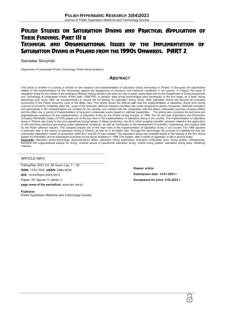Scientific papers 2023 - Part A

Authors:
Feiko J. M. de Jong, Thijs T. Wingelaar, Paul Brinkman,
Pieter-Jan A. M. van Ooij, Anke H. Maitland-van der Zee,
Markus W. Hollmann, and Rob A. van Hulst
The COMEX-30 hyperbaric treatment table is used to
manage decompression sickness in divers but may result in
pulmonary oxygen toxicity (POT). Volatile organic
compounds (VOCs) in exhaled breath are early markers of
hyperoxic stress that may be linked to POT. The present
study assessed whether VOCs following COMEX-30
treatment are early markers of hyperoxic stress and/or POT
in ten healthy, nonsmoking volunteers.


Authors:
Simona Mrakic-Sposta, Maristella Gussoni, Mauro Marzorati,
Simone Porcelli, Gerardo Bosco, Costantino Balestra,
Michela Montorsi, Claudio Lafortuna, and Alessandra
Vezzoli.
Exposure to acute hypoxia elicits several functional
changes in the human body to cope with the decreased
oxygen availability. Whereas some of these adjustments
(increased pulmonary ventilation and heart rate) are well
characterized, others are still poorly understood. Excesses
in the accumulation of reactive oxygen species (ROS),
generated within the mitochondria, drive mechanisms
contributing to injury including the induction of oxidative
damage.
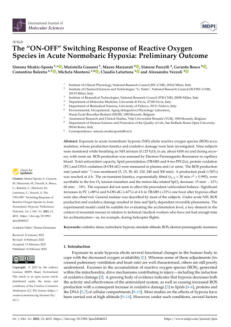

Authors: Junjie Wei, Peng Xiao, and Tao Chen
Conductive gels have been developing as superior
wearable sensing materials due to their intrinsic
conductivity, softness, stretchability, and biocompatibility,
showing great potential in many aspects of our lives.
However, it is challenging for traditional conductive gels to
realize sensing applications underwater. The swelling of
gels and the loss of conductive components in the
aqueous environment, resulting from the diffusion across
the interface, lead to structural instability and sensing
performance decline. Fortunately, significant efforts have
been devoted to improving the water resistance of
conductive gels and employing them in underwater
wearable sensing in recent years, and some are exciting.
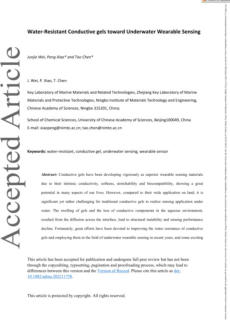

Authors: Olivier Castagna, Jean-Eric Blatteau, Arnaud
Druelle, Jordan Amara, and Jean-René Lacour
The authors suspected that oxygen uptake (VO2) and
pulmonary ventilation (VE) might be much higher than
expected during military fin swimming. In this framework,
they compared these variables in the responses of trained
military divers during land cycling and snorkeling exercises:
Eighteen male military divers participated in this study.
They performed two test exercises on two days: A maximal
incremental cycle test (land condition), and an incremental
fin swimming (fin condition) in a motorized swimming
flume.
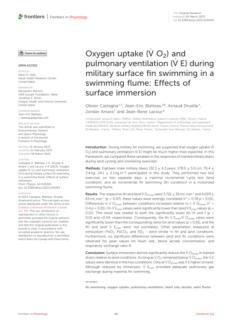


Author: Ran Arieli
The author and his team suggest that in a “distal arterial
bubble formation”, in the bifurcating arterial tree, the
vessel’s wall becomes thinner and wall surface to the
volume of the vessel increases, both of these
circumstances enhance inert gas diffusion from the
surrounding tissue into the blood.
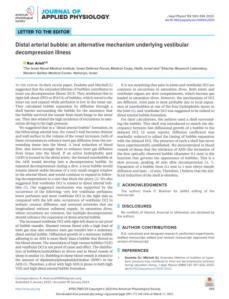

Authors:
Yu-Yao Zhang, Yi-Jun Zhou, Yuan-Yuan Jia, Tian-Tian
Wang, Dian-Huai Meng
Hyperbaric oxygen therapy is one of the common clinical
treatments, but adverse effects have hampered and
limited the clinical application and promotion of
hyperbaric oxygen therapy. The authors conducted a
systematic review and meta-analysis of the adverse effects
of hyperbaric oxygen therapy to provide a theoretical basis
for clinical treatment.


Authors:
Chunqin Liu, Mingyi Qin, Xiaojuan Hou, Yu Li, Zongze He
This paper reports on the treatment experience in a case
of microscope-assisted auricular replantation, targeted
postoperative treatment, early intervention with
hyperbaric oxygen therapy, and individualized nursing
care.
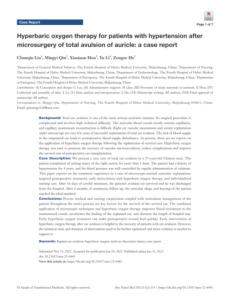

Authors:
Mariana Ríos-Gómez, Viviana Gómez-Ortega, Cesar
Cardona, and Jose A. De la Hoz-Valle
This systematic review aims to identify and evaluate the
clinical outcomes of hyperbaric oxygen therapy in the field
of plastic, reconstructive, and aesthetic surgery, found in
the literature from the year 2000 to the present
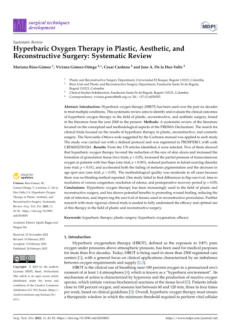

Authors:
Armaan K. Malhotra, Ashton P. Chang, Joseph P. Lawton,
Aderaldo Costa Alves Jr., Angela Jerath, Bourke W.
Tillmann, Harry Foster, Azad Mashari, Leodante da Costa,
and Ashish Kumar
This report describes the use of hyperbaric oxygen therapy
for the acute management of an intraoperative air
embolism encountered
during a neurosurgical procedure. Furthermore, the
authors highlight the concomitant diagnosis of tension
pneumocephalus requiring evacuation prior to hyperbaric
therapy.
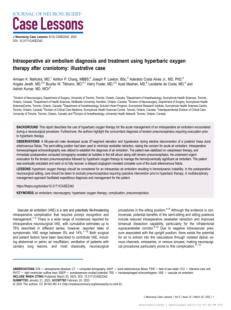

Authors:
Emmanuel Gouin, Jean Eric Blatteau, Emmanuel
Dugrenot, François Guerrero, Bernard Gardette; on behalf
of Under the Pole Consortium
Scientific underwater exploration could benefit from
professional diving facilities. This could allow marine
research for durations far exceeding anything currently
possible. The closed-circuit rebreather
expansion provides new perspectives by unleashing divers
and their diving bell. “Under the Pole Expeditions”
developed an innovative compact underwater habitat for
this purpose.
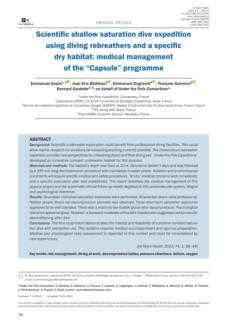

Authors:
Phillip G. Durham, Awaneesh Upadhyay, Angel Navarro-
Becerra, Richard E. Moon, Mark A. Borden, Paul A. Dayton,
Virginie Papadopoulou
The method described aims to treat tumor hypoxia
microbubbles comprising oxygen as a majority component
of the gas core with a stabilizing shell that may be used to
deliver and release oxygen locally at the tumor site
through ultrasound destruction. Previous work has
revealed differences in circulation half-life in vivo for
perfluorocarbon-filled microbubbles, typically used as
ultrasound imaging contrast agents, as a function of
anesthetic carrier gas.
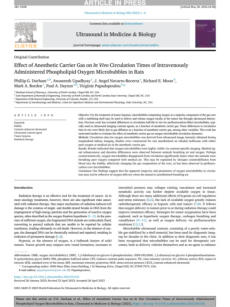

Authors:
David Q. LeID, Andrew H. Hoang, Arian Azarang, Rachel
M. Lance, Michael Natoli, Alan Gatrell, Lesley Blogg, Paul
A. Dayton, Frauke Tillmans, Peter Lindholm, Richard E.
Moon, Virginie PapadopoulouI
The authors report a method to generate synthetic post-
dive data using doppler ultrasound signals collected in
both precordium and subclavian vein with varying
degrees of bubbling matching field-standard grading
metrics. This method is adaptable, modifiable, and
reproducible, allowing for researchers to tune the
produced dataset for their desired purpose.
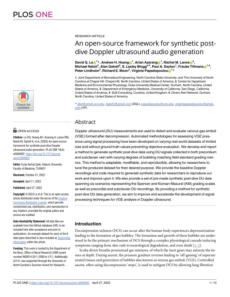

Authors: Ali Boolani, Joel Martin, Fulvio D’Acquisto, and
Costantino Balestra.
Fatigue is a complex and often misunderstood mood.
Most biomedical researchers interested in fatigue
conceptually defining fatigue as the absence of energy.
However, Loy et al. (2018) provided evidence that
biologically energy and fatigue may indeed be two
distinct unipolar moods. Since then, multiple studies have
provided evidence that energy and fatigue may have
both distinct and overlapping biological, behavioral, and
bio-mechanical correlates.
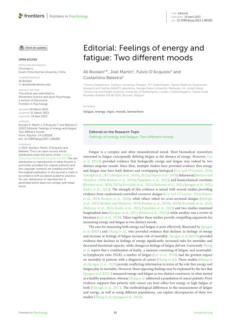

Authors:
Romain Guenneugues, Anne Henckes, Vincent
Mansourati, and Jacques Mansourati
Hyperbaric oxygen therapy (HBOT) is the standard
adjuvant treatment for life-threatening or disabling
pathologies.
Currently, mechanical and electronic variations of
implantable cardioverter-defibrillators (ICD) in hyperbaric
conditions have not been evaluated. As a result, many
patients eligible for HBOT but ICD recipients cannot
undergo this therapy, even in emergency situations.
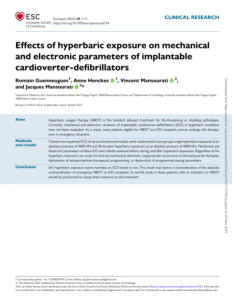

Authors: Mehdi Abakka, MJ Mekkaoui, M. Bouffetal, RA
Bassir, M. Kharmaze, MO Lamrani, MS Berrada
Hyperbaric oxygen therapy (HBOT) is defined as a method
of administering inhaled oxygen (O2) for therapeutic
purposes under a pressure greater than atmospheric
pressure. The therapeutic benefits of HBO result, on the
one hand, from the physical effects linked to the increase
in barometric pressure and the partial pressure of O2 in
the tissues and, on the other hand, from the biological
effects linked to the production reactive species of O2 and
nitrogen. These are likely to interact with many molecular
processes responsible for the main anti-ischemic, pro-
healing and anti-infective effects.
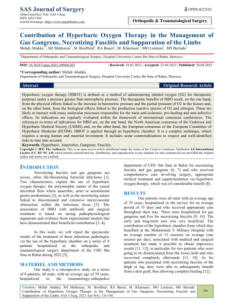

Authors:
Ahmet Burak Simsek, Hazım Alper Gursu, Emine Azak,
Yasemin Ozdemir Sahan, Ayse Esin Kibar Gul, Funda Kurt,
Ibrahim Ilker Cetin
The authors aimed to determine whether systolic and
diastolic functions of patients who presented to the
pediatric emergency clinic because of carbon monoxide
poisoning and were treated with hyperbaric oxygen
therapy. These patients were examined with tissue
doppler imaging method before and after the treatment.


Authors:
Gonzalo Monge-Martínez, Matías Otto-Yáñez, Nicole
Norambuena, Verónica Martínez, Daniela Retamales,
Rodrigo Torres-Castro
This study aims to analyze the safety of the hyperbaric
oxygen treatment at 1.45 atmosphere absolute (ATA) and
compare it with reports at the same and higher pressures
of treatment.
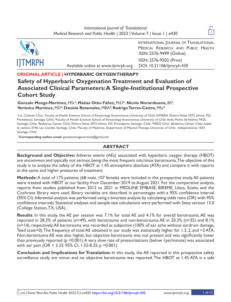

Authors:
Katarzyna Latusek, Adrianna Słotwinska-Pawlaczyk,
Aleksandra Warakomska, Magdalena Kubicka-Musiał, Rafał
Wiench, and Bogusława Orzechowska-Wylegała
Periodontitis is a chronic inflammatory disease with
multifactorial aetiology. The relationship between
periodontal disease and systemic diseases such as
diabetes, obesity, metabolic syndrome, atherosclerotic,
cardiovascular disease, and cognitive disorders has been
the subject of many studies. The purpose of this study was
to evaluate the effectiveness of hyperbaric oxygen therapy
on periodontal health in patients suffering from
periodontitis and type 2 diabetes.
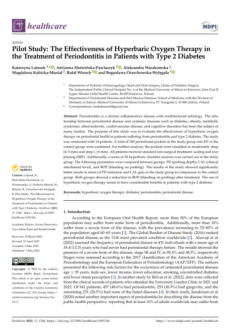

Authors:
Connor T. A. Brenna, Shawn Khan, Rita Katznelson,
Katherine Marseu
Neurologic injury is relatively common in the context of
spinal surgery, and is often treated with physiotherapy,
pharmacotherapy, or surgical intervention. Emerging
evidence supports a possible role
for hyperbaric oxygen therapy (HBOT) in the treatment of
peripheral and spinal nerve injuries. The authors describe
the successful use of HBOT in improving neurologic
recovery after complex spine surgery with new-onset
postoperative unilateral foot drop.
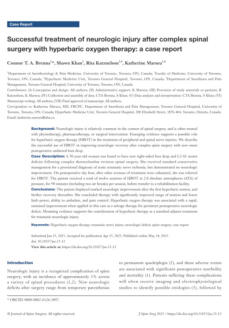

Authors:
Alain Boussuges, Guillaume Chaumet, Martin Boussuges,
Amelie Menard, Stephane Delliaux, and Fabienne
Brégeon
Although previous studies have determined limit values of
normality for diaphragm excursion and thickening, it
would be beneficial to determine the normal diaphragm
motion-to-inspired volume ratio that integrates the activity
of the diaphragm and the quality of the respiratory system.
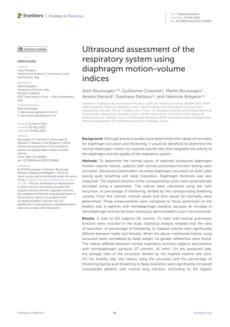

Authors:
Clément Leveque, Simona Mrakic Sposta, Sigrid
Theunissen, Peter Germonpré, Kate Lambrechts,
Alessandra Vezzoli, Maristella Gussoni, Morgan Levenez,
Pierre Lafère, François Guerrero, Costantino Balestra
This study investigated the metabolic responses of hypoxic
breathing for one hour to inspired fractions of 10% and
15% oxygen. To this end blood samples of 14 nonsmoking
volunteers were taken before and at 30 min, 2 h, 8 h, 24
h, and 48 h after exposure. The level of oxidative stress
was evaluated while antioxidant systems were observed in
terms of the total antioxidant capacity (TAC) and urates.
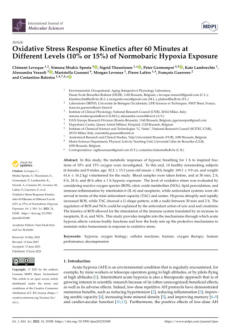

Authors: Kent J. MacLaughlin, gregory P. Barton,
udolf K. Braun, Julia E. MacLaughlin, Jacob J. Lamers,
Mathew D. Marcou, and Marlowe W. Eldridge
Hyperbaric air (HBA) was first used pharmaceutically in
1662 to treat lung disease. Extensive use in Europe and
North America followed throughout the 19th century to
treat pulmonary and neurological disorders.
Since that time the 78% Nitrogen fraction in HBA has
been completely displaced by 100% oxygen to create the
modern pharmaceutical hyperbaric oxygen therapy
(HBOT), a powerful treatment that is approved for multiple
indications.
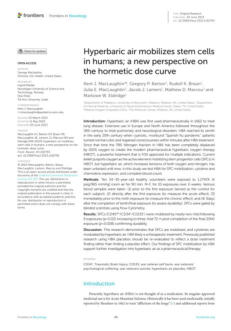

Authors:
Olivier Castagna, Arnaud Druelle, Guillaume Michoud,
Thibaut Prevautel, and Jean René Lacour
Immersion pulmonary edema (IPE) is a frequent diving
accident, and it is the primary cause of hospitalization for
young military divers during training. The objective of this
study was to identify immersion-induced parameters
predicting individual susceptibility to IPE.
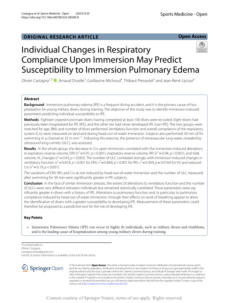

Authors:
Eva Maria Martin, Sven Rupprecht, Simon Schrenk, Fabian
Kattlun, Isabelle Utech, Monique Radscheidt, Stefan
Brodoehl, Matthias Schwab, Philipp A. Reuken, Andreas
Stallmach, Thomas Habekost, Kathrin Finke
The authors assumed that cognitive dysfunction and
fatigue in post-COVID syndrome are critically linked via
hypoarousal of the brain. Thus, we assessed whether tonic
alertness as a neurocognitive index of arousal is reduced in
these patients and how this relates to the level of central
nervous activation and subjective mental fatigue as further
indices of arousal.
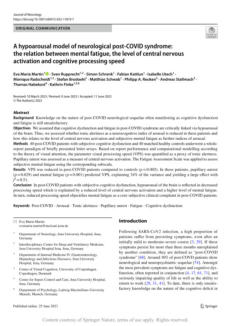





Author:
Desi Rahmah Sari, Ismi Dian Meiliana, Dewangga Sakti
Satria Kinasih, Hamidah Kurniasari, Purwo Sri Rejeki
Suicide is the second most common cause of death and a
major public health problem in many countries.
Chemical poisoning, such as hydrochloric acid, accounts
for 18.8% of total suicide cases in Indonesia.
This study aimed to provide a better understanding on
hyperbaric oxygen's biomolecular mechanism as a
potential adjuvant therapy in hydrochloric acid poisoning.
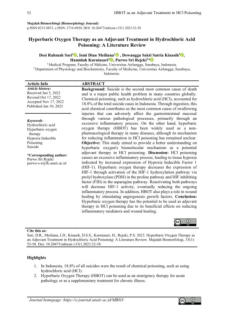

Authors: Katarzyna Mielniczek, Grzegorz Rutkowski
This article presents what decompression is and how to
perform it correctly using dive ascent tables, and the typical
symptoms of decompression sickness. This article also
describes typical diving accidents caused by poorly
planned dives without decompression.
stops being performed. The article emphasizes that
important factors contributing to diving safety are:
Proper training of the diver and a properly prepared diving
plan, including the decompression stops.
The divers’ mental state and their so-called adaptive
training.
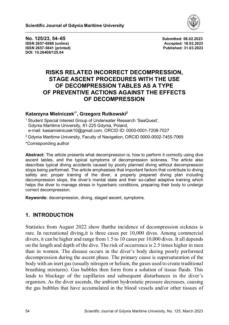

Authors: Richard Viking Lundell, and Tommi Ojanen
Heart rate variability (HRV) is a useful method for studying
the autonomic nervous system (ANS). As measuring
devices have developed and become smaller, many
researchers have become interested in the possibilities of
implementing the method for diving medicine research.
The aim of this study was to review human ANS responses
in cold water diving (water temperature <5°C), and to
comprise the current knowledge of HRV studies in diving
and hyperbaric exposure into one review article.
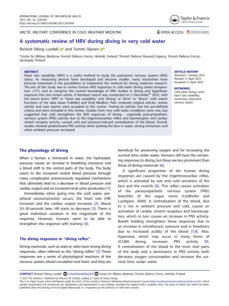

Authors: Tanya Palmer, Steven J. Obst, Craig R. Aitken,
James Walsh, Surendran Sabapathy, Lewis
Adams, and Norman R. Morris
Exertional dyspnea is the primary diagnostic symptom for
chronic cardiopulmonary disease populations. While a
number of exercise tests are used, there remains no gold
standard clinical measure of exertional dyspnea. The aim
of this review was to comprehensively describe and
evaluate all types of fixed-intensity exercise tests used to
assess exertional dyspnea in chronic cardiopulmonary
populations and, where possible, report the reliability and
responsiveness of the tests.
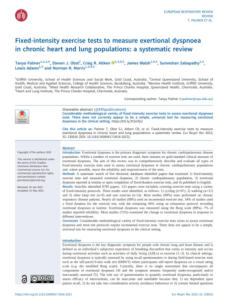

Authors: Bingyan Ren, Hanbin Ye Wenyuan Shan, Xuelei
Tao, Zi Ye
Using the random number table method, 40 patients with
craniocerebral injury who were treated at the First
People’s Hospital of Nantong were randomly assigned to
either the control group or the hyperbaric oxygen group,
with 20 patients in each group. The control group
received routine intervention for clinical traumatic brain
injury, while the hyperbaric oxygen group received
additional hyperbaric oxygen intervention during the 7 to
30 days of routine intervention. Indicators of oxidative
stress and nerve growth factor levels were compared
between the two groups at the time of admission and 30
days after therapy.
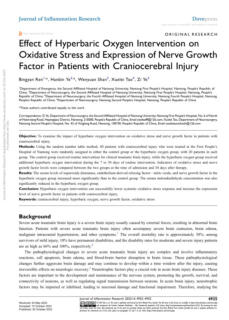

Authors:
Lustina Leonte, Karina Ivanov, Angela-Stefania Marghescu,
Serban-Radu Matache, Florica Valeria Negru, Ana-Luiza
Iorga, Silviu Mihail Dumitr, and Beatrice Mahle
The authors present the case of a 35-year-old patient
without a pathological history who developed
hemopneumothorax due to altitude barotrauma during a
commercial airline flight. The computed tomography of
the chest identified the presence of emphysema "blebs"
and bubbles, while the histopathological examination of
the lung fragment identified elements suggestive of the
diagnosis of respiratory bronchiolitis associated with
desquamative interstitial pneumonia
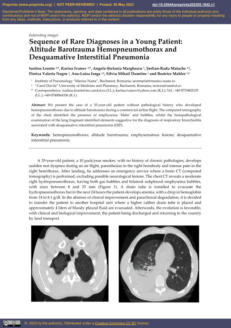

Authors: Eric A. Aloko, Munkaila Seibu, Daniel Apaak,
Emmanuel O. Sarpong, Stephen R. Sorkpor,
Edward W. Ansah
The aging process is characterized by reduced physical
activity, accumulation of fat, and loss of muscle mass,
resulting in weight gain and reduced cardiorespiratory
function, which leads to a loss of physical function
capacity. Therefore, the purpose of this study was to
determine the extent to which body weight and
cardiorespiratory endurance predict the physical
functional capacity of older adults in Navrongo, Ghana.
This study employed a quantitative cross-sectional design,
using a multistage sampling method with 998 participants
aged (60yrs+).
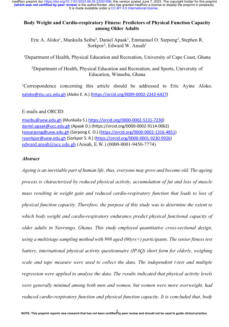

Authors:
Neil Wright, Katherine Newell, Ka Hung Chan, Simon
Gilbert, Alex Hacker, Yan Lu, Yu Guo, Pei Pei, Canqing Yu,
Jun Lv, Junshi Chen, Liming Li, Om Kurmi, Zhengming
Chen, Kin Bong Hubert Lam, and Christiana Kartsonaki
Existing evidence on the long-term ambient air pollution
(AAP) exposure and the risk of cardiorespiratory diseases
in China mainly focuses on mortality and is based on area-
average concentrations from fixed-site monitors for
individual exposure. The authors aimed to examine the
relationships between AAP exposure and the risk of
cardiorespiratory diseases using predicted local levels of
AAP.
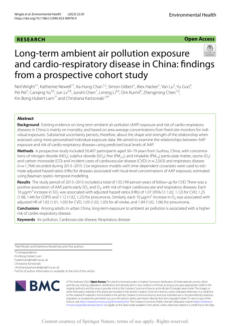

Authors: Ahmad Fawzy, Ismiralda Oke Putranti, Erni
Setiyawati
Psoriasis is a chronic, immune-mediated inflammatory skin
disorder that affects 2-3% of the worldwide population.
Hyperbaric oxygen therapy, a safe and well-tolerated
procedure, has been suggested as a potential treatment
for psoriasis due to its ability to increase tissue oxygenation
and reduce inflammation. This review article summarizes
the current understanding of the pathophysiology of
psoriasis and the potential benefits of hyperbaric oxygen
therapy as a treatment modality.
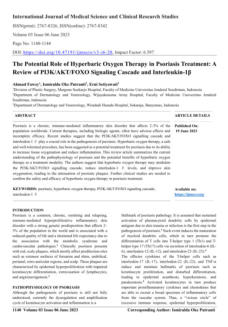

Click on the octopus
to return to the top
of the page

Click here



Authors:
Marta Ruiz-Mambrilla, Antonio Dueñas-Ruiz, José L. Pérez-
Castrillón, Iciar Usategui-Martín, Antonio Dueñas-Laita
A 27-year-old experienced aphasia and other symptoms
following CO poisoning. The authors underwent speech
therapy* (speech therapy* = assessment and treatment of
communication problems and speech disorders) and
hyperbaric oxygen treatments for two months. This
combined approach effectively resolved the patient's
symptoms. Further research is needed, but this case shows
promise for treating similar conditions post-CO intoxication.


Authors: Leigh C. Ward, & Steven Brantlov
The measurement of phase angle by bioimpedance
analysis (BIA) is an indicator of "cellular health”, broadly
related to cellular water balance, membrane integrity, and
cell mass. However, much of the research is based on
empirical observations and less on the biophysical
principles of BIA or an explanation of the reasoning
behind the results.This review aims to clarify the electrical
models used to describe tissue properties, with a focus on
phase angle. It also highlights practical issues in measuring
phase angle and the advantages of using bioimpedance
spectroscopy (BIS).
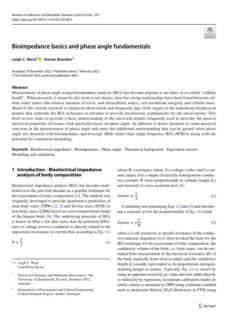

Authors: Gregory H. Grossman, & Marianne K. Henderson
Artificial intelligence (AI) is defined as an automated
software system capable of ingesting, assembling, and
analyzing data and domain knowledge to provide
context-specific outputs.
This article discusses the impact of artificial intelligence (AI)
on improving various aspects of biobanking, such as
donor recruitment, biobank operations, education, data
annotation, ethical data deposition, and many others.
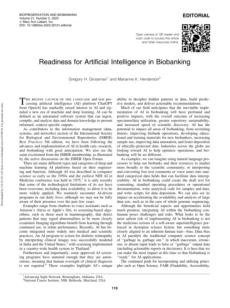

Authors: Pamela Tozzo, Arianna Delicati, Beatrice
Marcante, & Luciana Caenazzo
Big data biobanks provide essential insights for improving
operations, creating innovative solutions, and addressing
inefficiencies. Effectively analyzing and using this data
requires information sharing, specific skills, training,
integration across the healthcare system, advanced
infrastructure, and robust security measures. These
elements are critical for developing and managing big
data biobanks, which may require new governance
models different from those used for traditional large
sample biobanks.
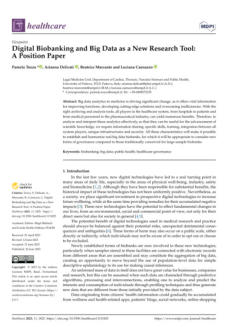

Authors:
Feiko J. M. de Jong, Thijs T. Wingelaar, Rob A. van Hulst
This paper is a summary of the various methods
implemented to control the adverse effects of oxygen.
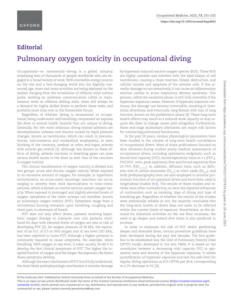

Authors:
Jan-Peter Schaap, Margy E Zuluaga Fernandez, Antoinette
Houtkooper , Edwin L Endert, Pieter-Jan AM van Ooij
In the diving community there is a special need to know if
asymptomatic or mild COVID-19 disease impacts the
cardiopulmonary functioning of individuals with
occupational exposure to extreme environments. To date,
no controlled studies have been conducted comparing
COVID-19-infected hyperbaric employees and non-
COVID-19-infected peers in a military setting.
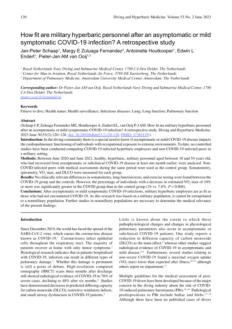



Authors: Metelkina Asya & Barbaud Axel
This paper critically reviews a study titled "Comparison of
newer hand-held ultrasound devices for post-dive venous
gas emboli quantification to standard echocardiography
"conducted by Karimpour et al. in 2022. The authors of the
text express interest in the study but also indicate that there
are several important aspects that need to be considered,
suggesting they may offer further critique or discussion on
the study's methodology, findings, or implications.
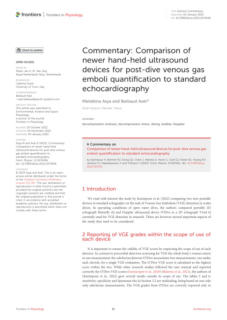

Authors: Wendy Sullivan-Kwantes & Peter Tikuisis
This study examined the vulnerability of military divers to
non-freezing cold injury (NFCI) during Arctic ice-diving
operations. It involved monitoring the temperature of
divers' extremities to assess the risk of NFCI and found that
the feet were particularly vulnerable. It also compared the
thermal comfort and protective qualities of different diving
suit configurations and highlighted the need for further
investigation into factors like hydrostatic pressure and
repetitive diving as potential risk factors for NFCI.
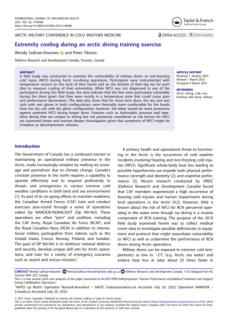

Author: Stanisław Skrzynski
This paper provides an informative overview of the history,
development, and implementation of saturation diving
technology in Poland, particularly in relation to the
offshore industry. It aims to highlight the economic and
historical context, key players, technological
advancements, and organizational efforts that have
contributed to the establishment and growth of saturation
diving practices in the Polish economic zone of the Baltic
Sea. It also emphasizes significant milestones and
collaborations that have shaped the current state of
saturation diving in Poland.
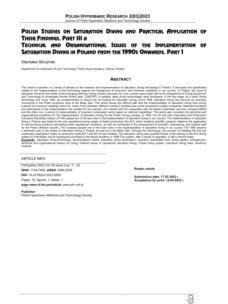

Authors: Richard Viking Lundell &Tommi Ojanen)
This study reviews the current knowledge on heart rate
variability (HRV) in diving medicine, particularly focusing
on human autonomic nervous system (ANS) responses in
cold water diving. It outlines the methodology used for
the literature review, including the search terms and
databases, and summarizes the findings from the selected
articles. In addition, it aims to consolidate existing research
on HRV and hyperbaric exposure to better understand
how cold water and increased pressure affect the ANS,
especially the parasympathetic nervous system (PNS).
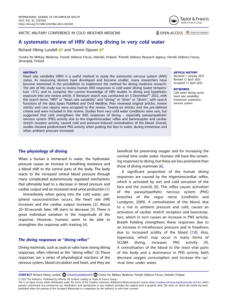




Authors:
Jan Risberg, Pieter-Jan van Ooij, Lyubisa Matity
This document presents the ESOT (equivalent surface
oxygen time) procedure as a more practical and intuitive
alternative to the current measures (K and UPTD) for
assessing pulmonary oxygen toxicity (POT) in surface-
oriented diving. It argues that ESOT offers similar accuracy
in predicting POT while being easier to calculate and
interpret, especially in operational environments. It also
provides specific ESOT threshold limits to guide safe diving
practices over multiple days.
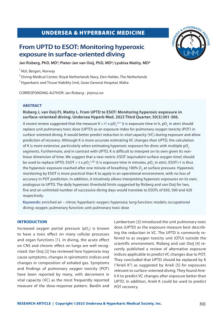

Authors: Rita I. Sharma, Anna B. Marcinkowska, Natalia D.
Mankowska, Monika Wa´skow, Jacek Kot, and
Pawel J. Winklewski
This paper discusses the safety concerns and potential
cognitive effects associated with scuba diving, particularly
focusing on the need for more research into the chronic
effects of diving on cognitive functions. It highlights the
lack of sufficient studies on technical divers and calls for
further investigation into the long-term impacts of diving
on cognitive health.
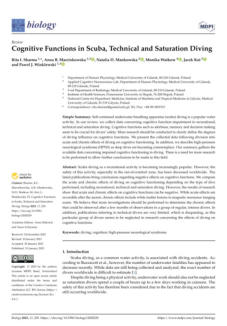

Authors: Stanisław Skrzynski
This article intends to inform readers about the history,
development, and implementation of saturation diving
technology in Poland, particularly in relation to the
offshore mining industry. It highlights the economic and
historical context, key players, and technological
advancements that have contributed to this technology's
establishment and growth in the Baltic Sea's Polish
economic zone. The article also aims to acknowledge the
challenges faced during periods of financial instability and
the collaboration with international and national entities
that facilitated the progress of saturation diving in Poland.

Authors:
Mika Onitsuka, Shinya Tada, Yoko Nozawa, Youichi
Yanagawa
This paper presents the findings of a retrospective study
investigating the degree of completion of a diving
accident checklist by a physician-staffed helicopter
emergency medical service (HEMS) during or immediately
after diving accidents. It compared the checklist
completion rates between patients who experienced
cardiac arrest and those who did not and concluded that
the checklist completion was lower in cases with cardiac
arrest.
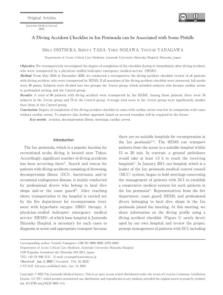

Authors:
John Lippmann, Christopher Lawrence, Andrew Fock
This study investigated compressed gas diving deaths in
Australia from 2014 to 2018 to identify ongoing problems
and assess countermeasures by comparing these findings
with data from 2001 to 2013. It outlines the methods used
for data collection, the results of the analysis, and the
conclusions drawn regarding the factors contributing to
diving fatalities, such as advancing age, obesity, and
cardiac-related issues. In addition, it emphasizes the
importance of assessing fitness to dive to prevent such
incidents.

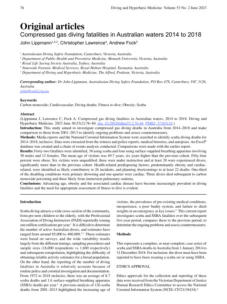

This document provides a detailed report and analysis of
diving activities, specifically saturation and surface-oriented
diving, on the Norwegian and foreign continental shelves
under Norwegian jurisdiction for the year 2022 to inform
about the volume of diving activities, incidents reported,
and trends in diving operations, including new reporting
practices for onshore facilities and future expectations for
offshore diving activities.



7 - Neuroinflammation with increased glymphatic flow in a murine
model of decompression sickness.

Authors: Stephen R. Thom, Veena M. Bhopale, Abid R.
Bhat, Awadhesh K. Arya, Deepa Ruhela,
Guanda Qiao, Xin Li, Shiyu Tang, and Su Xu
This project studied how glial lymphatic function affects
decompression sickness (DCS) in mice. It found that after
high air pressure, certain inflammatory microparticles
increase, leading to neuroinflammation and disrupted
blood-brain barrier. Injecting these microparticles into
mice caused similar effects, which could be blocked by an
antibody. High pressure and decompression increase
glymphatic flow and sustain neuroinflammation.
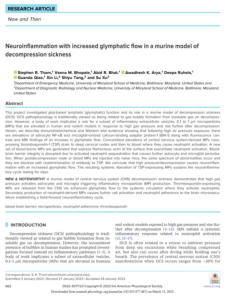



17 - A critical review of physiological bubble formation in
hyperbaric decompression
Authors: Virginie Papadopoulou, Robert J. Eckersley,
Costantino Balestra,
Bubbles can form in the body after dives, even if
guidelines are followed, leading to decompression
sickness. Understanding bubble formation and growth
remains challenging, with unanswered questions. Recent
studies focus on heterogeneous nucleation and theories
related to micronuclei stability. The importance of bubble
formation, growth, and behavior is also discussed.
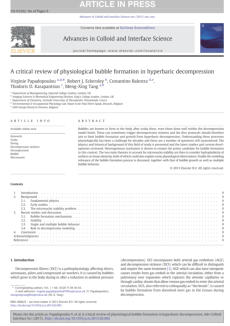


18 - The risk of decompression illness in breath-hold divers: a
systematic Review
Author: S Lesley Blogg, Frauke Tillmans, Peter Lindholm
Breath-hold (BH) diving has risks like drowning,
pulmonary oedema, and barotrauma, along with dangers
of decompression illness (DCI) such as decompression
sickness (DCS) and arterial gas embolism (AGE). A
systematic review identified 17 articles covering 44 DCI
cases in BH diving, supporting DCS and AGE as risks for
these divers.
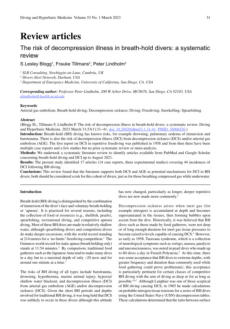



39 - Right-to-Left Shunt in Divers with Neurological Decompression
Sickness: A Systematic Review and Meta-Analysis.
Author: Spyros Peppas, Leonidas Palaiodimo, Sanjana
Nagraj, Damianos G. Kokkinidis, Nidhish Tiwari,
Amrin Kharawala, Mohammad K. Mojadidi,
Sanauallah Mojaddedi, George Ntaios, Robert T.
Faillace, and Jonathan M. Tobis
This study evaluated the link between right-to-left shunt
(RLS) and neurological decompression sickness (NDCS) in
divers. It reviewed nine studies with 1830 divers, showing
RLS was more common in those with NDCS (62. 6% vs.
27. 3%). High-grade RLS was linked to NDCS and was
notably associated with inner ear conditions. No
significant link was found between RLS and asymptomatic
brain lesions.



2 - Promising applications of human-derived saliva biomarker testing
in clinical diagnostics

Authors: Mengyuan Song, Hao Bai, Ping Zhang,
Xuedong Zhou, and Binwu Ying
Saliva testing is becoming an increasingly important non-
invasive diagnostic tool due to its abundance of biological
substances and direct connections to the oral, digestive,
and endocrine systems. Beyond these obvious links,
researchers are also finding saliva to be informative for
conditions like neurodegenerative and psychological
diseases. This review focuses on human-derived saliva
biomarkers from 2016-2022, categorized by type (e.g.,
intracellular DNA, RNA, proteins, exosomes, cell-free
DNA), to highlight the promising clinical diagnostic
applications of saliva testing.
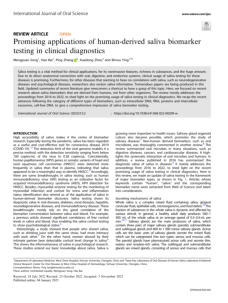



3 - Estimated power output for a distance run and maximal oxygen
uptake in young adults
Authors: Gen-Min Lin, Kun-Zhe Tsai, Xuemei Sui, and Carl
J. Lavie
This study on 45 young adult military personnel in
Taiwan found that estimated power output (EPO) from a
3,000-meter run field test was a superior predictor of
VO2 max (correlation coefficient of 0.813) compared to
the run time itself (correlation coefficient of 0.729 when
scaled to body mass).
Ultimately, this research suggests that EPO, which is
proportional to the mean square velocity, offers a better
estimate of VO2 max than run time alone in young
adults.
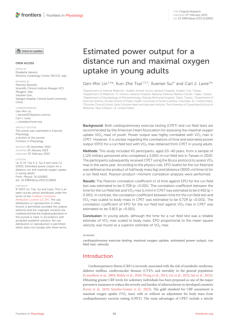


26 - Assessing Critical Flicker Fusion Frequency: Which
Confounders? A Narrative Review
Author: Thomas Muth, Jochen D. Schipke, Anne-Kathrin
Brebeck, and Sven Dreyer
Critical flicker fusion frequency (cFFF) is a visual system
test used to evaluate visual system temporal
characteristics, diagnose neurological and internal
diseases, and determine alertness and cognitive functions
in diving/hyperbaric medicine. Factors affecting cFFF
threshold accuracy include participant characteristics,
optical factors, smoking/drug use, environmental aspects,
and breathing gases and partial pressures. The review
discusses the application of cFFF measurements in diving
and hyperbaric medicine and provides
recommendations for interpreting changes in the
threshold..
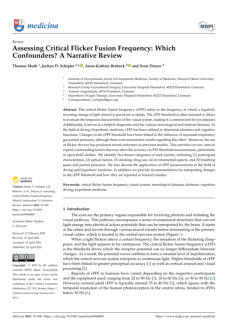


38 - The levels of processing effect under nitrogen narcosis
Author: Wendy Kneller, & Malcolm Hobbs
This research aimed to test the hypothesis that nitrogen
narcosis affects free recall but not recognition memory in
depths of 30-50 meters of sea water. Experiments found
that recall was significantly worse in deep water under
narcosis and higher in deep processing conditions. The
study concluded that narcosis affects the encoding stage
of memory, not self-guided search.

